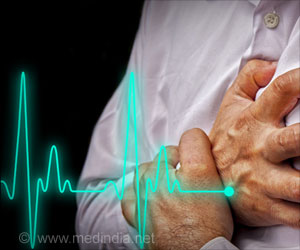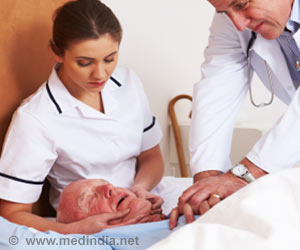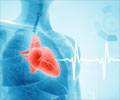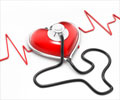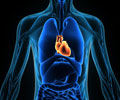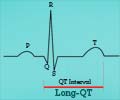- About Cardiac Arrest - (http://www.heart.org/heartorg/conditions/more/cardiacarrest/cardiac-arrest_ucm_002081_subhomepage.jsp)
- What Is Sudden Cardiac Arrest? - (https://www.nhlbi.nih.gov/health/health-topics/topics/scda)
- Sudden cardiac arrest - (http://www.mayoclinic.org/diseases-conditions/sudden-cardiac-arrest/home/ovc-20164858)
- Cardiac arrest - (https://en.wikipedia.org/wiki/cardiac_arrest)
What is Cardiac Arrest?
Cardiac Arrest occurs when the heart stops pumping or contracting abruptly. In the sequence of events that follow, blood supply from the heart to the brain and vital organs gets affected resulting in a loss of heart function, breathing and consciousness. The primary reason for the heart to stop beating is an electrical imbalance in the heart.
Sudden cardiac death can occur within minutes of a cardiac arrest if it is not treated immediately. Survival depends on providing instant cardiopulmonary resuscitation (CPR) or using a defibrillator to give an electric shock or just giving chest compressions.

Unlike other systems in the body, the heart possesses its own electrical stimulator called the sinus node which comprises of a group of specialized cells in the heart’s upper right chamber. Electrical impulses that are generated by the sinus node flow in an orderly manner through the heart in order to control the rate and rhythm of the heartbeat and the pumping of blood from the heart to the rest of the body.
Arrhythmias are caused when this flow of electrical impulses is affected. Arrhythmias result in irregular heartbeats. The heart ends up beating either slowly or fast or irregularly. Not all irregularities are necessarily a cause for concern, but some of them can be serious leading to a sudden stop of the heartbeat, inturn leading to the cessation of the heart function.
People who have underlying heart conditions or who are born with a congenital heart defect are more susceptible to cardiac arrests. For a cardiac arrest to occur in a person with a normal healthy heart there should be an external trigger that causes the irregular heartbeat in the first place.
Many people mistake a cardiac arrest for a heart attack. In a heart attack the heart does not stop beating as opposed to a cardiac arrest. It occurs if a particular part of the heart muscle is deprived of the blood supply due to the mechanical blockage in the artery that supplies the blood. A massive heart attack can lead to a cardiac arrest.
Facts and Statistics on Cardiac Arrest
- Cardiac arrest mostly occurs in people who are in their mid 60s but it can occur in children and young adults too.
- The highest percentage of sudden cardiac arrests occur at home (70%), followed by public places (20%) and then in nursing or assisted living homes (10%).
In the United States, 535,000 people suffer from cardiac arrest every year. Of these 326,000 suffer it at homes or public places and the 209,000 while in a hospital setting.
- Around 350,000 people die due to cardiac arrest every year in the United States. This equals to one life lost every 90 seconds due to cardiac arrests. In the western countries, cardiac arrests account for 15% of all deaths that take place.
- 95% of people die because of delays in treatment following a sudden cardiac arrest.
When a cardiac arrest happens outside the hospital setting, very few bystanders are able to initiate CPR and hence the mortality is high.
- Without any intervention, it is predicted that the survival probability drops by 10% every minute following a cardiac arrest. This could mean death in 10 minutes following such an attack.
What are the Causes of Cardiac Arrest?
Ventricular fibrillation (VF), a kind of arrhythymia or abnormal heart rhythm is the foremost cause of SCA. Arrhythmias usually arise due to a problem in the heart’s electrical system. In VF, electrical disturbances cause the ventricles or the lower chambers of the heart to twitch or quiver randomly instead of contracting in a timely manner and pumping blood.
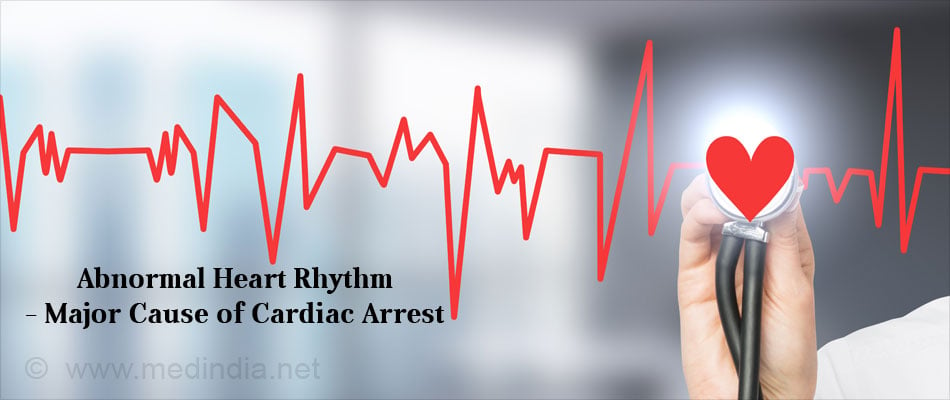
A life-threatening ventricular arrhythmia can also be caused due to underlying heart conditions like -
- Coronary artery disease (CAD) – it accounts for 60 - 70% of cardiac arrests in adults. CAD is a condition where arteries become clogged due to cholesterol and other fat deposits. This decreases blood flow through the heart which impedes electrical impulses. CAD results in coronary ischemia (inadequate blood supply to a particular part of the body) and can result in ventricular fibrillation (VF).
- Electrical short circuits (electrical problems in the heart) that occur around scar tissues left by the attack may lead to heart rhythm abnormalities.
- An enlarged heart or cardiomyopathy - is when the heart muscles become abnormal due to enlargement or thickening. The heart tissue gets damaged and ventricular fibrillation like arrhythmias can occur.
- Congenital heart disease is a heart condition or a defect that some children are born with.
- Valvular heart disease that affects the valves of the heart and makes them leaky or narrow (stenosis). This causes the heart chambers to become enlarged or weakened as it takes the stress due to the poorly functioning valves.
- Primary heart rhythm abnormality which is a condition where the heart’s own electrical system slows down or stops. A long QT syndrome (an irregularity in the heartbeat) occurs in one in every 5000 to 7000 newborns. These conditions can be detected earlier and treated.
- Inflammation of the middle layer of the heart wall or myocarditis which is usually caused by a viral infection. Myocarditis can affect the heart’s muscle walls and its electrical system both of which can lead to irregular heart rhythms.
What are the Symptoms and Signs of Cardiac Arrest?
In case of a cardiac arrest the individual becomes unconscious without warning and collapses suddenly.
The usual signs are -
- Lack of palpable pulse (a condition where the pulse cannot be felt)
- Abnormal or Absent Breathing
Symptoms that could precede a cardiac arrest includes -
- Fatigue and weakness
- Dizziness and fainting
- Chest pain, palpitations and shortness of breath
- Vomiting
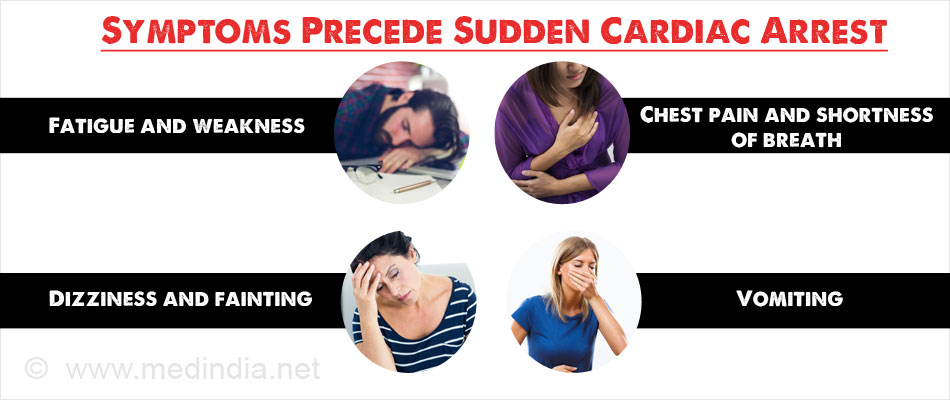
What are the Risk factors of Cardiac Arrest?
Coronary artery disease or CAD and cardiac arrests have similar key risk factors.
- Medical conditions like high blood pressure, diabetes and high blood cholesterol.
- Lifestyle factors like obesity, sedentary lifestyle, smoking and drinking.
The secondary risk factors are:
- Previous episodes of cardiac arrests or heart attacks.
- Family history of cardiac arrests or other heart disorders like heart rhythm disorders, congenital heart defects, heart failure and cardiomyopathy.
- Old Age.
- Gender - men have three times a lifetime risk than women below the age of 85.
- Electric shock.
- Use of illegal drugs (cocaine or amphetamines).
- Imbalance of essential nutrients like potassium or magnesium.
- Trauma to the chest as a result of a direct blow to the area over the heart. This is called commotio cordis and must occur at a critical time during the heartbeat cycle to cause the cardiac arrest.
What are the Complications of Sudden Cardiac Arrest?
Sudden cardiac arrest causes unconsciousness due to the loss of oxygen-rich blood in the brain and leads to -
- Brain damage in survivors if the arrest lasts for more than 8 minutes
- Death if recovery takes more than 10 minutes.
How do you Diagnose Cardiac Arrest?
Clinically, cardiac arrest is diagnosed by the absence of a carotid pulse (when detected accurately), abnormal or lack of breaths, unconsciousness or signs of poor circulation.
If a person survived a cardiac arrest, tests can be performed to understand what caused the attack in the first place.
Electrocardiogram: Sensors or electrodes placed on the chest and limbs can check for any abnormal electrical activities, such as a prolonged QT interval. The pattern of ECG will indicate ventricular fibrillation or a flat ECG.

Blood tests: The heart’s ability to function depends on certain chemicals like potassium and magnesium and hormones. A blood test will reveal any abnormal levels. A recent heart injury or attack can also be detected through blood tests.
If a person recovers from the cardiac arrest, the blood parameters will reveal them to be acidic and this will requires corrections using bicarbonate alkaline intravenous fluids.
Imaging Tests:
Chest X-Ray: Will reveal the size and shape of the heart and the blood vessels and indicate if there is a heart failure.
Echocardiogram: Looks at the dynamic ultrasound image of the heart. An ECHO will reveal any damaged area of the heart due to a heart attack, will check the pumping efficiency and the ejection fraction and record any valves that are not functioning properly.
Nuclear Scan: Tiny amounts of a radioactive substance like thallium is injected into the bloodstream and its flow is tracked using cameras. This can help identify any blood flow abnormalities.
What is the Treatment and Management of Cardiac Arrest?
Response to a cardiac arrest has to be instantaneous. Immediate cardiopulmonary resuscitation or CPR is the first step in providing care. CPR restarts the flow of oxygen-rich blood to the vital organs and helps the patient survive until more-advanced emergency care becomes available.
How to Administer CPR:
If you are in a situation where a person becomes unconscious and stops breathing do the following -
- Check for the pulse, especially carotid pulse in the neck below the lower jaw ( easiest pulse to feel in the body). Feel your own first and understand its location before you start feeling the pulse of unconscious person. Turn the neck on the side to make it easier. If 2 of you are present to help and the patient is unconscious, one of you should call an emergency service while the other starts CPR on the patient.
- If the person is not breathing, start by giving chest compressions.
- Chest compressions are given by putting the heel of one hand on the center of the chest and covering it with the second hand. Next it is required to push down hard on the person’s chest using your upper body weight and to deliver compressions at a rate of 100 to 120 a minute allowing the chest to rise in between them.
- If you are not trained in CPR, continue administering chest compressions till emergency personnel arrive.
- If you are trained in CPR, after 30 compressions, check for normal breathing.
- If the person is not breathing, the head has to be tilted back and the chin lifted in order to open the airway. Pinch the nostrils and give a mouth to mouth rescue breath, making sure the chest lifts up. If it does, give the second breath too.
- If the chest does not rise, repeat the head tilt and chin lift steps and then give the second breath.
- Chest compressions or CPR have to be administered continuously till professional help arrives or a public-use defibrillation device is available.
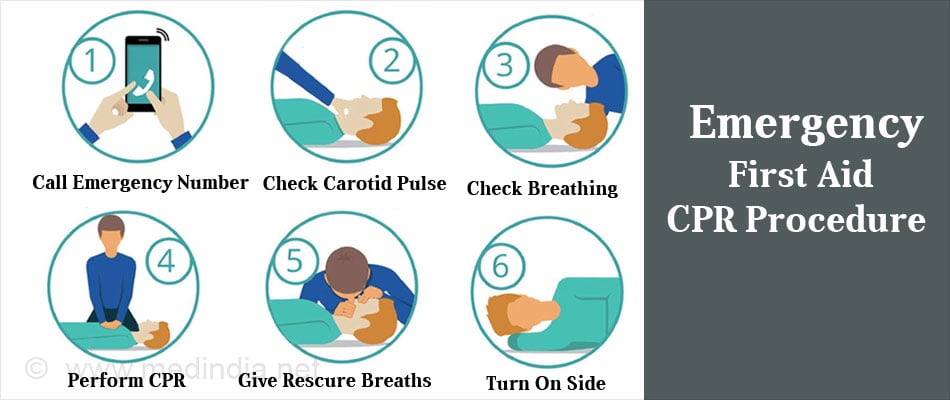
Defibrillation:
A defibrillator delivers an electrical shock through the chest wall to the heart. This restores a normal heart rhythm.
The shock can be delivered by emergency personnel or a bystander if a public-use defibrillator (automated external defibrillator or AED) is available. AEDs will provide a shock if they detect the life-threatening arrhythmia. They will not give a shock to a person who has fainted and not having an arrest thus protecting the patient and helping the lay man administering the shock.
Instructions on the defibrillator are very graphically displayed and should be followed.
Long-term Treatment:
A person who has survived a cardiac arrest will have to be assessed to detect the cause of the arrest in the first place in order to prevent it from recurring.
Additional tests and preventive treatment options have to be discussed. Options include -
1. Drugs:
- Anti-arrhythmic drugs to treat arrhythmias, mainly amiodarone
- Beta blockers
- Angiotensin-converting enzyme (ACE) inhibitors
- Calcium channel blockers
- Anti-coagulants or blood thinners
- Epinephrine has been shown to improve short term improvement such as getting back spontaneous circulation
2. Implantable cardioverter-defibrillator (ICD): This is a battery-powered device placed under the skin near the left collarbone. A couple of electrode-tipped wires from this device connect it to the heart.
The ICD constantly monitors the heart rhythm. If it detects any changes in the heart rhythm it corrects them by sending low or high energy shocks.
An ICD is more effective than a drug treatment.
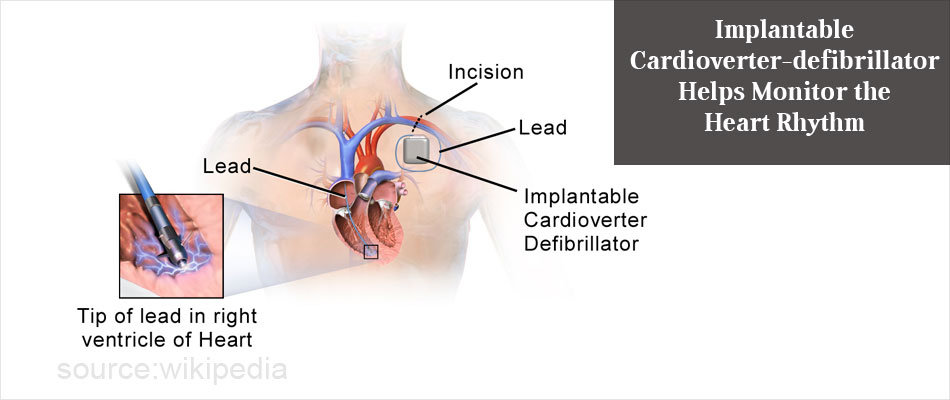
3. Extracorporeal membrane oxygenation (ECMO) – Resuscitation with extracorporeal membrane devices has been tried and has shown better results in an in-hospital setting of cardiac arrest compared to outside hospital cardiac arrests.
4. Procedures:
- Corrective surgery for blocked coronary arteries: This surgery will help blood flow freely through the heart and reduce the risk of arrhythmias.
Blocked arteries can be treated by a procedure called angioplasty - by nserting a long, thin tube with a balloon tip at its end that is made to inflate and open up the blocked coronary artery.
Blocked arteries can also be corrected by a bypass surgery that sews veins or arteries beyond the blocked artery in order to bypass it.
- Heart surgery to correct a congenital heart defect, a faulty valve or a diseased heart muscle can improve heart rate and blood flow.
- Ablation procedure is used to resolve any abnormal electrical pathway in the heart. The pathway is blocked using electrodes that are carried by the catheters. These electrodes send electrical impulses and help to detect the abnormal tissue. When the abnormal tissue is detected, the electrodes are heated using radiofrequency energy to burn the abnormal tissue.
How do you Prevent a Cardiac Arrest?
If you are at a high risk to get a cardiac arrest due to having severe coronary heart disease (CAD) and / or a recent heart attack, it can be prevented by -
- Taking other medications to lower blood pressure, prevent blood clots and to reduce the heart’s workload
- Taking medications like beta blockers or statins (for underlying conditions like diabetes, heart disease, previous stroke or high cholesterol) that directly lower the risk
- Taking blood thinning tablets like Aspirin and clopidogrel
- Lifestyle changes like healthy eating and exercising
- Undergoing treatments for CAD like coronary angioplasty or a bypass grafting
If you have no risk factors for developing a cardiac arrest, you should still wish to prevent it by -
- Maintaining a healthy weight
- Healthy eating
- Managing stress
- Being physically active
- Not smoking

